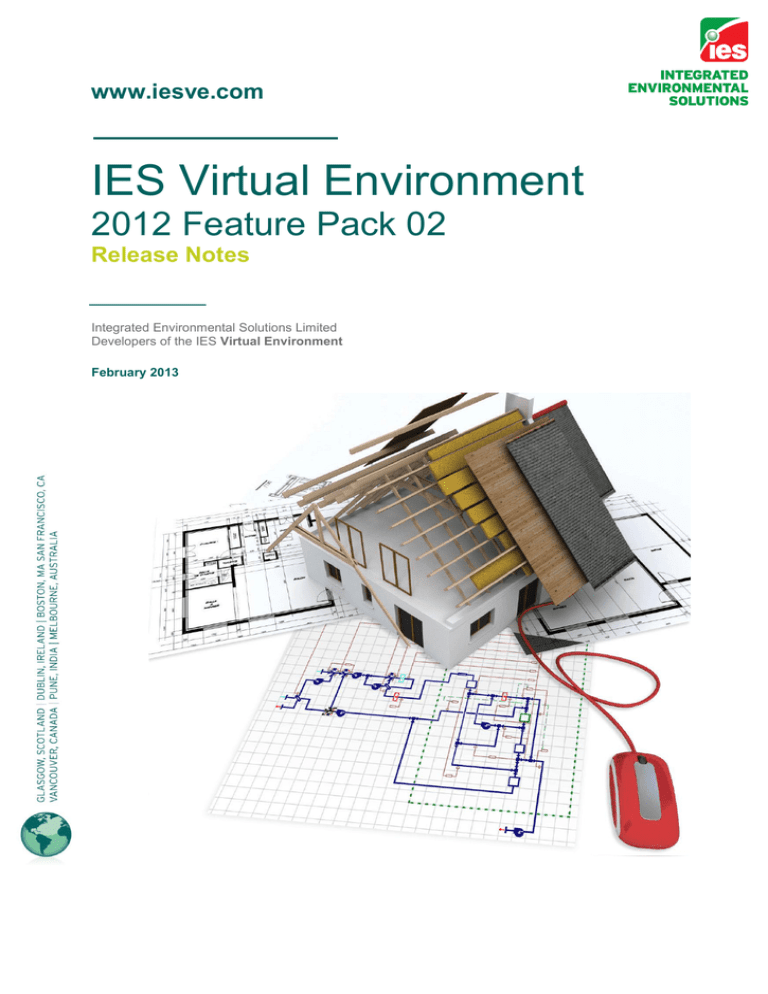

Integrated Environmental Solutions Virtual Environment (IES VE) is another comprehensive whole-building simulation tool that provides design professionals with a single software environment for a detailed assessment and optimization of building and system designs. ĮnergyPlus (E + ) is a “new generation” whole-building simulation tool that can simulate multiple building systems using a network of nodes, which offers considerable flexibility in the modeling of building energy system.
#Ies ve partition free
Over the past 50 years, a broad spectrum of free (e.g., EnergyPlus, eQuest) and commercial (e.g., IES, TRNSYS) building performance simulation (BPS) tools capable to develop whole-building energy models arrived on the market that vary in many aspects, including their graphical capabilities, accuracy, flexibility, user-friendliness, simulation time, life-cycle applicability, and price. Consequently, building energy modeling can enable better-informed design solutions and compliance with energy codes and standards. Building energy modeling is a robust technique that provides a pathway to test, analyze, and optimize various energy efficiency measures and technologies, ,, ,. To satisfy these high standards, designers must utilize different scenarios, design strategies as well as novel and advanced systems and technologies,. One of the most widely recognized rating systems is the Leadership in Energy and Environmental Design (LEED) which promotes a whole-building approach to sustainability through the creation and implementation of high-performance requirements,.

The findings also emphasize the importance of the modeler's assumptions regarding the modeling of HVAC systems and their impact on the model's predictions.Ĭode requirements for the energy performance of buildings are becoming more stringent. The high consistency between the models’ aggregated predictions are particularly pertinent and encouraging for certification programs such as LEED, which take into account aggregated energy consumption data in their assessments. The difference between the total energy consumptions of the EnergyPlus and IES models developed according to the final construction drawings was approximately 2.1%, whereas differences between the heating and cooling loads of the EnergyPlus and IES models with ideal air load systems were 6 MWh (1.7%) and 0.86 MWh (7.8%), respectively. Consequently, this study provides new information regarding capabilities of two extensively used BPS tools to model advanced and innovative buildings, and in particular HVAC systems that are increasingly becoming used in high-performance commercial and institutional buildings worldwide. The main contribution of this work is the use of three methods of evaluation with different levels of complexity, free-floating, ideal air load system, and detailed method to analyze and compare the capabilities of EnergyPlus and IES to model complex LEED silver multi-purpose university building. Different limitations apply to almost every building performance simulation (BPS) software available today and to have confidence in the predictions of whole-building energy models it is necessary to have a thorough understanding of various features, specific capabilities, and disadvantages of BPS tools. The energy performance gap is one of the most discussed issues in the design community since energy modeling became an integral part of the building design process.


 0 kommentar(er)
0 kommentar(er)
